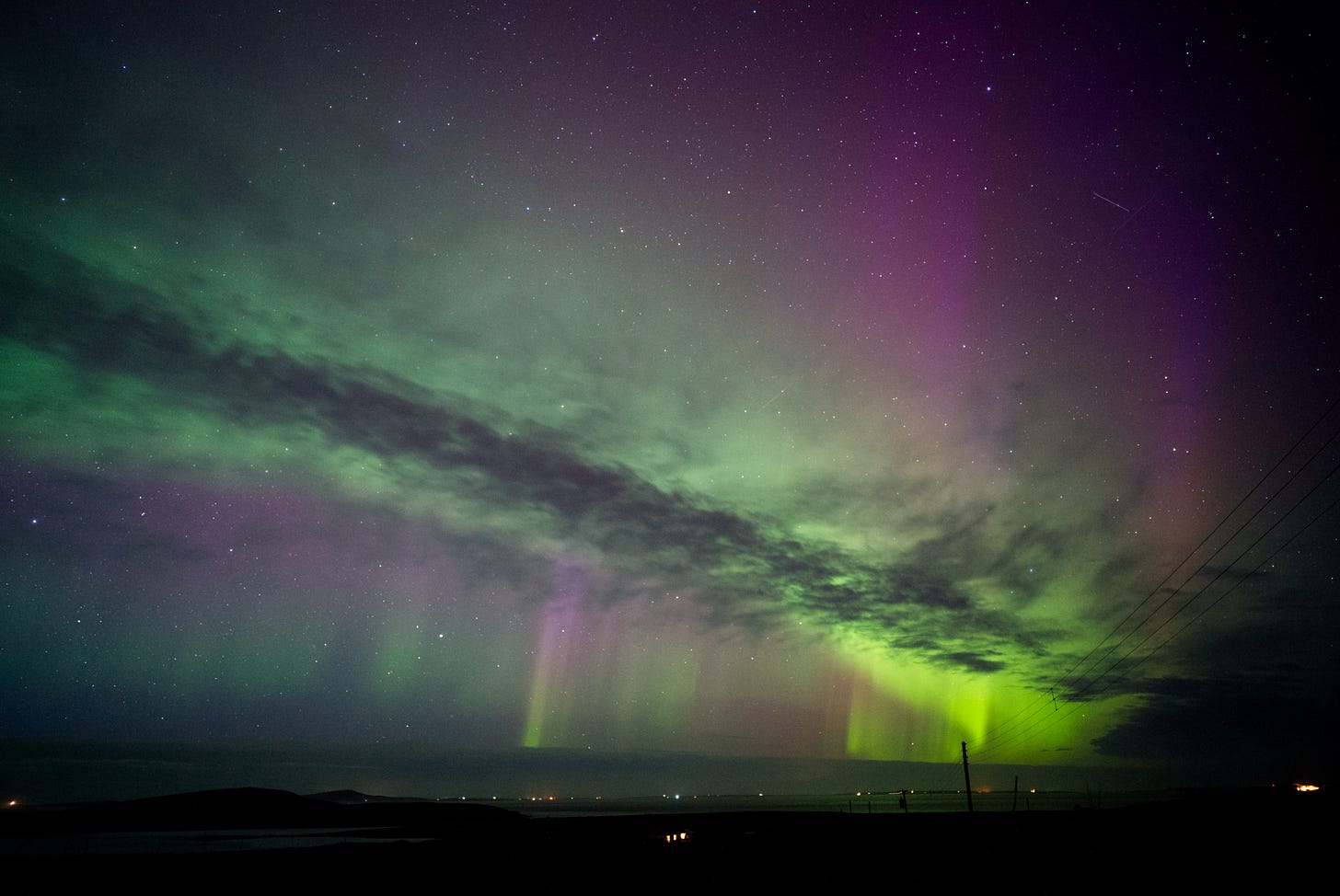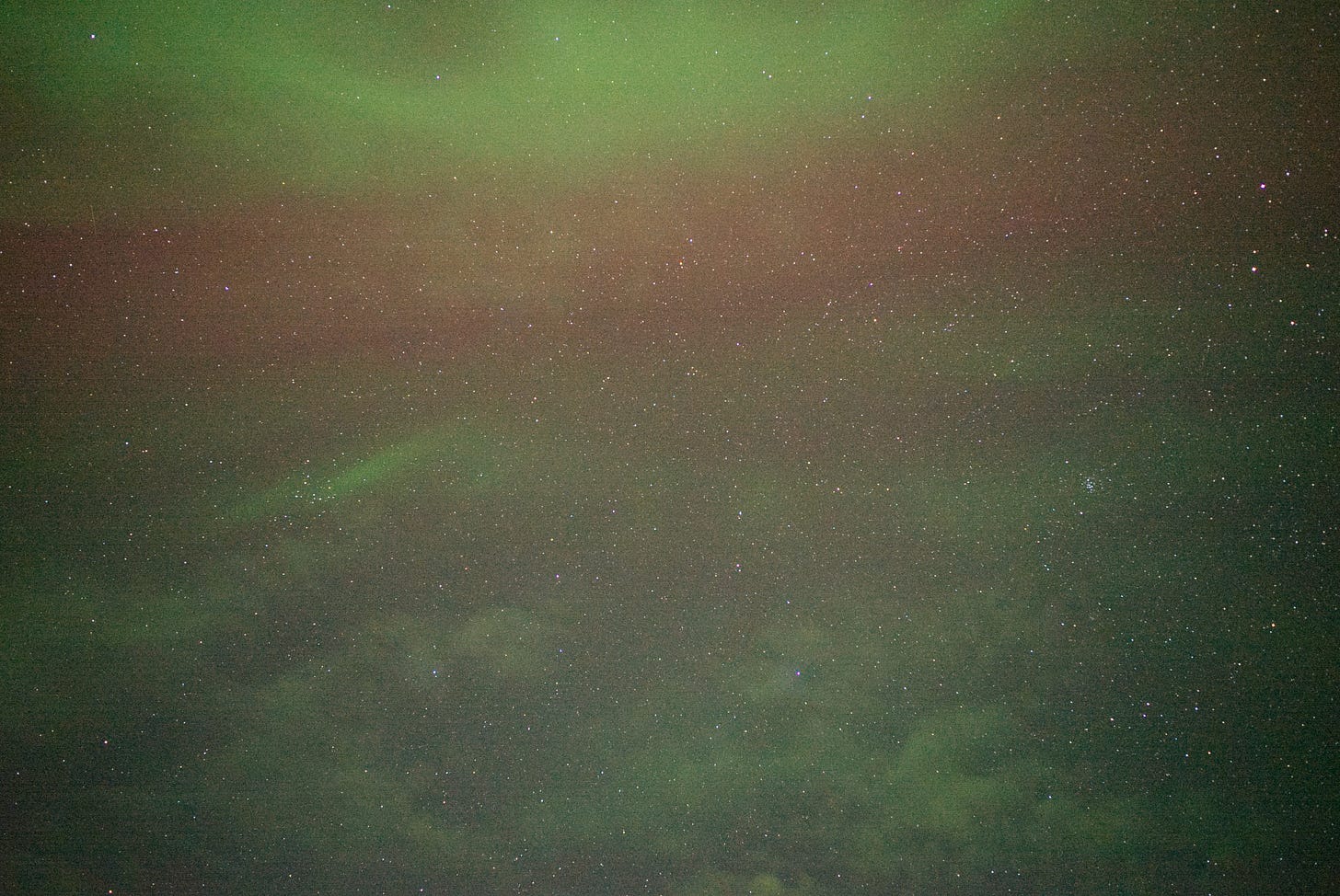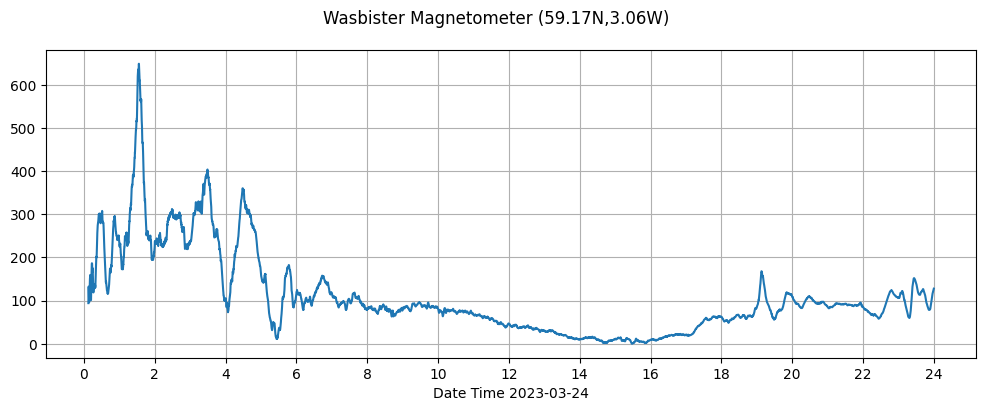With heightened geomagnetic activity through the day and active space weather alerts expectations were raised for auroral activity on the night of 23 March, but would the weather cooperate was the big question.
I had prepared my gear during the day - batteries charged, intervalometer set up for timelapse, camera settings checked, tripod adapters attached to cameras. It really is worth getting ready, so when the time comes to head out, all is ready to go.
Weather prospects were looking good for the evening, and checking a little after 20:00 showed a bright aurora patch in the east and a nice arc - time to get going!
I went out with the Sony A7s camera and Zeiss Loxia 21mm lens at first, just to make sure I could get a few shots in case the weather or the aurora did not play ball. Even at this early stage it was a magnificent display, with a double arc and rays heading high in the sky.
I shot a couple of video clips as well - the aurora was so bright!
There seemed to be a little lull in activity, so set up the second camera, a Canon 600D, which had an intervalometer attached so I could make a timelapse video of the night's events. I use a Samyang 8mm fisheye lens for this, as it will capture a wide view of the sky and not need any manual attention.
It’s difficult to describe all the beauty of a really bright display of the aurora - you really need to experience it. But here are a few photos from the night that will give a flavour.
I’ve also made a video which combines the stills, video, and time-lapse. It’s up on my YouTube channel and you can watch the video here
I hope you like it and if so please subscribe to my YouTube channel to more videos as I post them.
The last real-time video segment shows looking directly overhead - while just looking it was clear there were patches appearing, and there faint tendrils or wisps of aurora about. This video segment captures their ethereal nature, but are a bit faint. Here is a slightly enhanced frame from the vid.
As we are heading towards solar-max - the sun has a regular 11 year cycle of activity, and we are approaching the next high - I expect we should get more aurorae and high power aurorae over the next couple of years. But we are not really able to predict space weather well yet, so we just have to wait and see… But it should be great!
TLDR
For those interested in more of the technical details.
For stills with the Sony A7s, exposure times of 5 or 10 seconds were used, at ISO 1600 and the Zeiss Loxia 21mm wide angle lens set at f/2.8. When there are moving rays these can be captured more sharply using shorter exposures. Longer exposures are better for capturing more vibrant colour in the background or at the tips of rays. I use Affinity Photo to develop the raw images, sometimes lifting the exposure and increasing the blackpoint.
Videos were also done with the same A7s - which has excellent low light performance. Shutter speed set to 1/25 second, and ISO upped to 640000. You will probable notice what is sometimes called ‘amp-glow’ at the top and bottom of the left side of frames. It’s more accurately just ‘electronics-glow’ - being caused by the electronics near to the sensor. More recent versions of the A7 have much less ‘amp-glw’
Videos had their brightness increased using the utility ffmpeg - which is a really useful ‘Swiss army knife’ tool for working with video. Its free and runs on all platforms
An intervalometer was attached to the Canon 600d, which was equipped with a Samyang 8mm ‘fish-eye’ lens, set at f/3.5. A shutter speed of 10s at ISO 3200 was used, with 15s between the start of exposures to allow time for the file to be saved.
The timelapse video was created using ffmpeg too - you can just give the tool a bunch of jpg’s and it will turn them into a mp4 (if you use the right incantation).
I have a magnetometer for monitoring the changes in the earth’s magnetic field. This has recently become properly deployed into a quiet part of the garden. Here are plots for the 23 and 24 March. There was further activity into the early hours of the 24th - but we were cloudy for much of the time. However my aurora web-cam (aurora-cam) showed lots of activity going on around 02:00 to 04:00.










